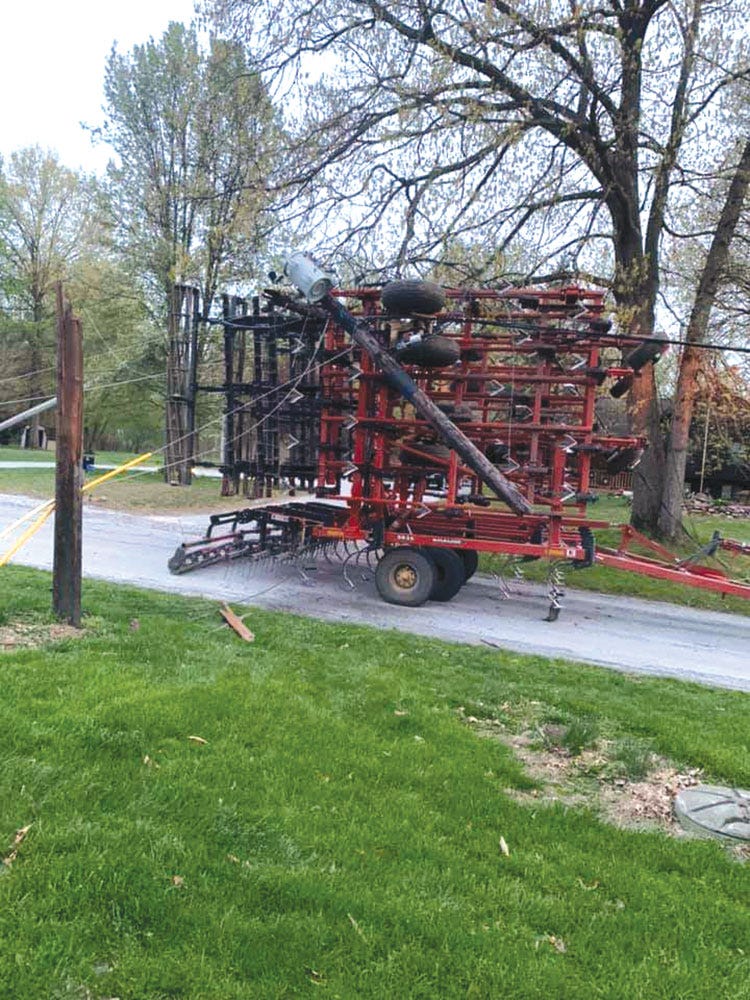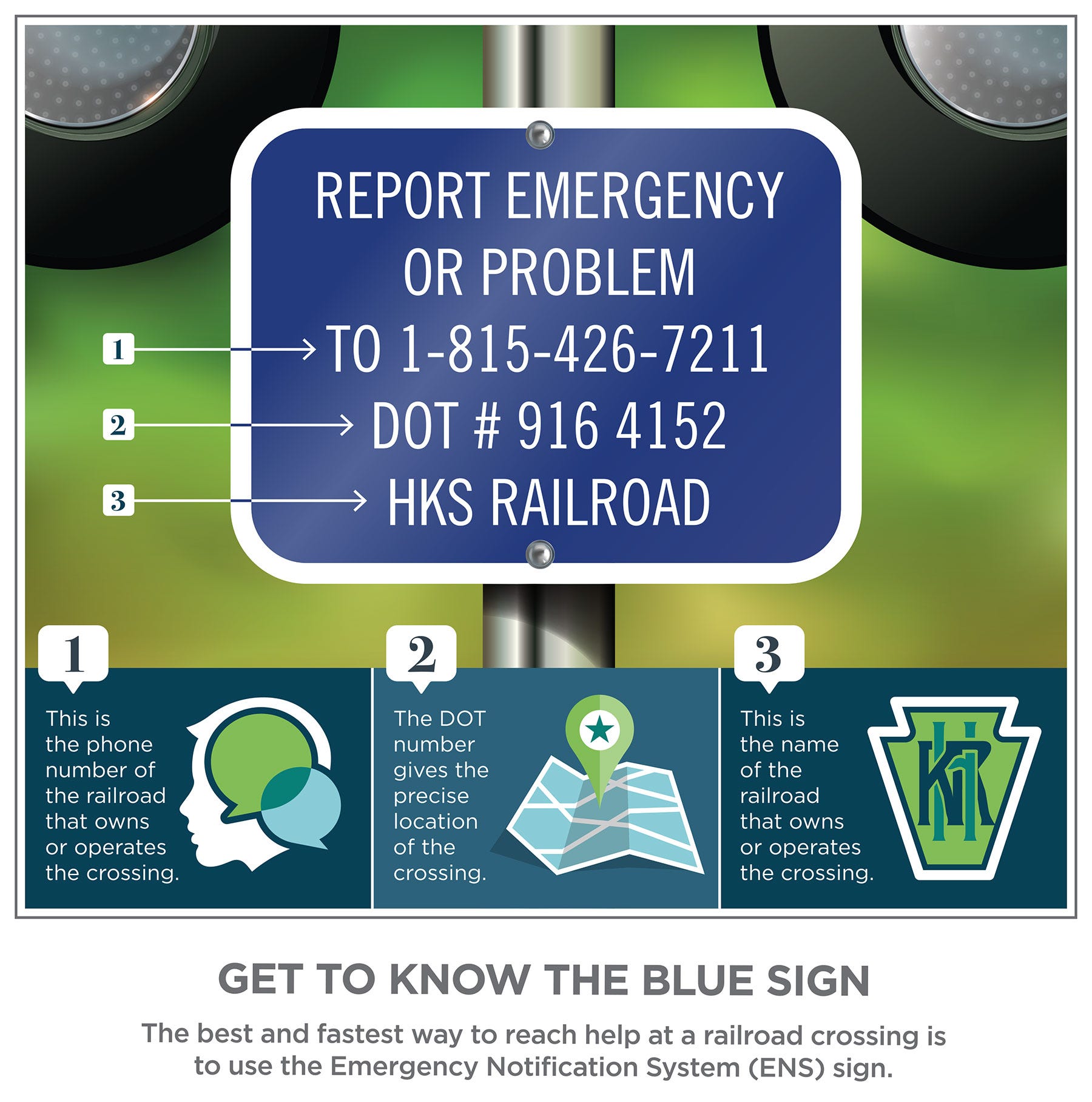March 6, 2024

Every minute counts as planting season approaches. However, spending one minute to think and make sure you stay safe and stay alive may be the best minute you spend.
Three specific areas pose dangers in rural settings in the spring: public roads, electric lines and railroad crossings. Many accidents that occur in the blink of an eye happen in one of these settings.
Whether it be related to roads, power lines, railroad safety or other farm tasks, many accidents are caused by farmers “getting in a hurry,” says Fred Whitford, director of Purdue Pesticide Programs. “Many of us have done stupid things and survived, but we were lucky. Trusting your luck is not a good safety plan.”
Here are some tips to keep yourself and others out of serious trouble in relation to these three areas.
Road safety
Equipment gets bigger and bigger, while country roads stay narrow. Add to that the fact that there are more people on the roads than ever, and they’re in a hurry. And, as Whitford says, “Some of them are just plain stupid. You can’t control stupid, but you can improve your chances of controlling the outcomes.”
Be courteous. If you’re driving a tractor or other farm implement, the law requires you to pull over if you have three or more cars following you and it’s safe to do so.
Remember that left turns are dangerous. When making a left turn, take the center of the road prior to turning. This will keep people from trying to pass you on the left. Whitford also says other drivers become immune to your equipment’s blinkers. Instead, turn them off, turn them back on when slowing down, and then use your turn signal before making your left turn.
Consider adding cameras. With big equipment, it’s often difficult to see around or behind you, rendering you essentially visually impaired. Adding cameras to your equipment to improve your field of view is easy and inexpensive.
Use SMV signs as needed. Especially when pulling wagons, make sure you have an slow-moving vehicle sign in place. If you get hit without one, “no SMV sign equals no defense in a lawsuit,” Whitford says.
Overhead power lines
Don’t live in fear of electricity, Whitford says. At the same time, be smart around anything electrical. Here are some specific tips:
Assume downed power lines are hot. While they may not be, if you’re wrong, you’re dead. Stay as far away from downed lines as possible. Keep others away too. Call for assistance.
Good Samaritans, beware! If you see someone trapped or hurt in their vehicle because of a downed pole or power line — even if it’s your spouse or friend — you can’t help them by putting yourself in danger. Instead, call 911 or the utility, if known.

WHERE ARE OBSTACLES? You don’t want to wind up with wires in your tillage tool like this person did. Make sure your widest points won’t snag wires or guy wires along roadways. (Fred Whitford)
Stay in the cab. If you should find yourself trapped in your tractor or combine because of downed or snagged power lines, staying in the cab is the safest place to be until the power is turned off. The only exception is if your vehicle is on fire, Whitford notes.
Stop moving. If you snag a power line, don’t think you can improve your situation by keeping going. “Those lines are very strong, and if you keep going, you’re only going to down more line and break off more poles,” Whitford says. Cut your losses, call 911 or the utility, and stay put until help arrives.
Railroad safety
Never try to beat a train, Whitford says. The few minutes you could save pale in comparison to the results if you don’t make it. Allow a comfortable margin of safety. Here are more safety tips to follow:
Never drive through crossing arms. More than 30% of train collisions with vehicles occur because motorists drive around or through lowered gates.
Observe advance warning signs. These round, yellow signs with a large black X flanked by two R’s indicate that a set of tracks is coming up within the next 750 feet.
Know what to do in an emergency. If your semi or vehicle gets stalled on a track, do not call 911. Those personnel may not be familiar with railroad practices, and if a train is headed in your direction, time is of the essence.
Instead, every crossing has a blue Emergency Notification System sign that lists a phone number for the railroad, a Department of Transportation number that specifies the location of the crossing, and the name of the railroad that owns or operates the crossing. Railroad personnel can then contact any trains coming your way to tell them there’s a stalled vehicle on the tracks. Only then should you call 911 for assistance with police and towing.

FIND BLUE SIGN: Pay attention to flashing lights and warning sounds at railroad crossings. Also pay attention to the blue signs, which can provide life-saving information. (Courtesy of Fred Whitford)
If you’re stalled and a train is coming toward you, you and any other passengers need to exit the vehicle immediately and get as far away as possible.
Read more about:
Farm SafetyAbout the Author(s)
You May Also Like






